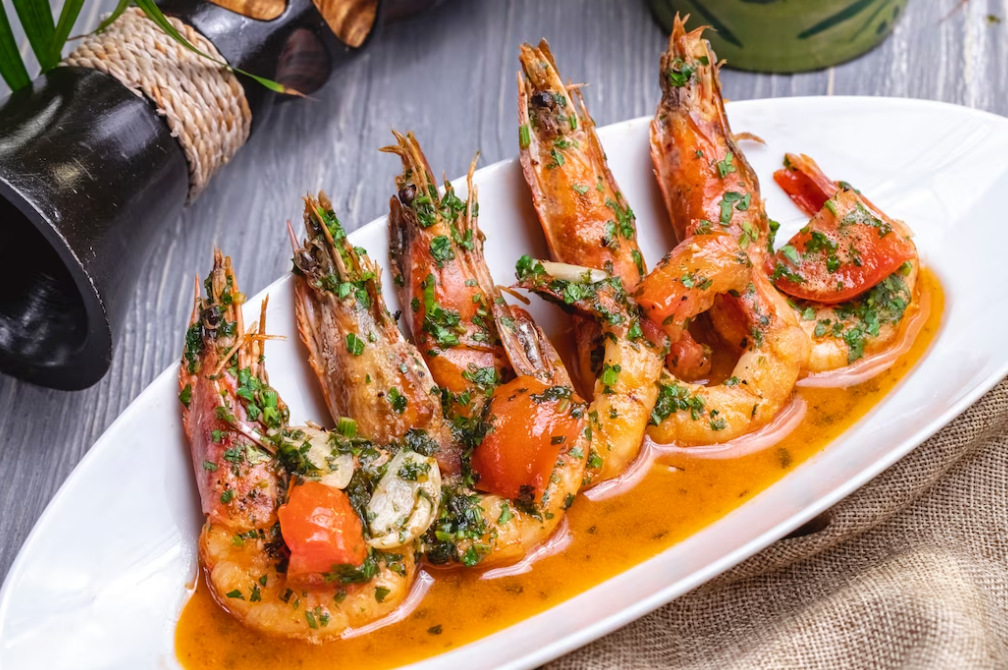Prawns and shrimps are some of the most beloved seafood on the menu. They can be found in a variety of dishes, from savory stews to crispy deep-fried delights. In this blog, we will delve into the differences between prawns and shrimps, the various types of cooked prawns and shrimps, their nutritional value, cooking techniques, wine pairings, cultural significance around the world, and the sustainability and environmental impact of prawn and shrimp farming.
The Difference Between Prawns and Shrimps
Prawns and shrimps belong to the same family of crustaceans, but they are not the same creature. They have some differences in body structure, such as the arrangement of their legs and the shape of their tails. Prawns also tend to be larger than shrimps, with longer legs and claws. Another noticeable difference is that prawns have a more distinct curve in their bodies than shrimps. From a culinary standpoint, prawns tend to have a sweeter flavor than shrimps, which are more delicate in taste.
Types of Cooked Prawns and Shrimps
There are over 300 different types of prawns and shrimps, and they come in various shapes, sizes, and colors. In the United States, the most commonly consumed kind of shrimp is the white shrimp, followed by the brown shrimp. Other types of shrimp include pink, red, and rock shrimp. In terms of prawns, there are also many varieties, the most popular being tiger, king, and banana prawns. These shellfish can be bought fresh, frozen, or canned, and they can be cooked in many different ways, each bringing out their unique flavors and textures.
Nutritional Value of Cooked Prawns and Shrimps
Prawns and shrimps are lean sources of protein, and they are low in calories and fat. A 100-gram serving of cooked shrimp contains approximately 24 grams of protein, only 99 calories, and 1.4 grams of fat. The same serving size of cooked prawns has 20 grams of protein, 85 calories, and 0.9 grams of fat. They are also an excellent source of vitamins and minerals such as phosphorus, iodine, and selenium. However, it’s essential to be mindful of sodium intake, as some store-bought prawns and shrimps can contain high levels of added salt.
Cooking Techniques for Prawns and Shrimps
Prawns and shrimps can be cooked in many ways, depending on the recipe and personal preference. They can be boiled, grilled, sautéed, deep-fried, or baked. When cooking prawns and shrimps, timing is crucial, as overcooked shellfish can become tough and rubbery. Shrimps only take a few minutes to cook, while prawns can take a little longer. It is also crucial to handle prawns and shrimps with care, as they can be delicate and easy to break apart. Some people prefer to cook their prawns with the head and shell on to maintain their flavor and texture, while others prefer to remove them for a cleaner presentation.
Pairing Cooked Prawns and Shrimps with Wine
Prawns and shrimps make for an excellent pairing with wine, especially white wine. Chardonnay, Sauvignon Blanc, and Pinot Grigio are some popular choices, as they complement the sweetness of the prawns and shrimps without overpowering them. Sparkling wine and Champagne also work well to enhance the flavors of shellfish, making them a great choice for special occasions or celebrations.
Cultural Significance of Cooked Prawns and Shrimps Around the World
Prawns and shrimps have cultural significance in many parts of the world. In some Asian cultures, prawns are considered a symbol of good fortune and prosperity. In Spain, gambas al ajillo (garlic shrimp) is a popular tapa dish, and in Italy, shrimp scampi is a classic seafood recipe. In the southern United States, boiled shrimp is a favorite regional cuisine, often served with cocktail sauce and lemon wedges. Prawns and shrimps are also commonly found in many coastal regions of Europe, Africa, and Asia, where they play a vital role in local cuisine.
Reheating Prawns and Shrimps
Reheating cooked prawns and shrimps is easy, but it’s important to do it correctly to avoid overcooking or drying out the seafood. To reheat cooked prawns or shrimps, simply place them in a microwave-safe container with a little bit of water and microwave on high for one to two minutes. Alternatively, you can gently reheat them in a pan with a little bit of butter or olive oil until they’re warmed through.
Conclusion
cooked prawns and shrimps are a delicious and nutritious seafood delicacy with a rich cultural significance. With their versatility and ability to pair with various wines, prawns and shrimps are sure to remain a popular choice among seafood lovers for years to come. So the next time you’re craving some tasty seafood, be sure to give these crustaceans a try! They’re not only delicious but also offer numerous health benefits, making them a guilt-free indulgence. So go ahead and enjoy some cooked prawns or shrimps today, whether in a tradit
